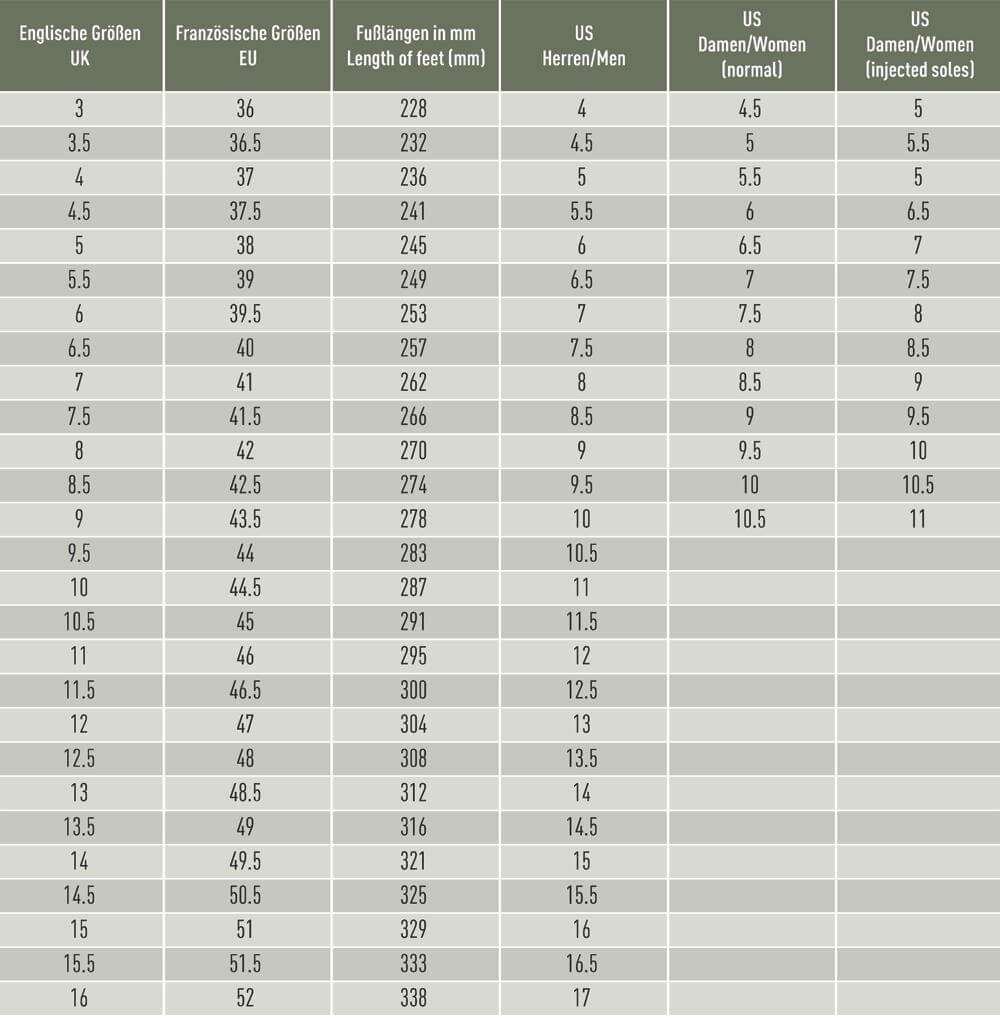It is always difficult to offer sizing information via e mail or the phone but here at TF we always say that Lowa boots are a standard fitting boot in comparison to other brands. They tend to fit the majority of customers who try them on straight out of the box & most customers in their normal shoe size. If you are a size 8 normally then try a Lowa boot in a size 8. You do not need to go up a size or alternatively have to try an extra wide boot.
We all know that the outdoors is a much more pleasant place to be with comfortable feet & it has been proven both physically and psychologically that if your feet are healthy, warm and comfortable then your overall health and state of mind is vastly improved. Something as innocuous and small as a blister can cause so much nause and be so debilitating to your well-being. Ask a soldier how important good comfortable fitting boots are?
The boring bits & a few top tips on how to obtain the best fit for your Lowa boots:
If you have a pair of boots at home or have recently purchased a pair online, you can follow the stages below to gauge the overall fit of your Lowa boots. If you have any doubts after doing so, our retail accounts usually offer free boot fitting advice.
1. Testing the length of the boot
With the boot unlaced, gently tap your toe into the front of the boot and then plant your foot flat on the ground. Insert your index finger down the back of the boot, along your Achilles. There should be enough room to snugly put your finger deep into the boot, without having to force it.
If your finger is tight along the back of your heel or squashed against the back of the boot, then this is the first sign that the boot may be too short. Too much space and the boot may be too large.
2. Planting the foot and lacing the boot
The next step is to see how the boot feels once it is laced up. From a seated position gently tap your heel into the back of the boot and plant your foot flat on an even surface. Then beginning at the toes start to tighten up the laces. Pressure should be even and firm, but not restrictive.
This process gives a good idea of the amount of space your foot is occupying inside the boot. If the boot is too small, the laces will be bulging outwards; too big and excessive tension will be required.
Follow the laces all the way up the boot, hooking onto any eyelets and finishing off with a secure bow. Ideally, you should remain seated throughout this process.
3. Stand up
You will now need to check the overall fit of the boot, which involves standing up. As you do this you will notice the feel of the boot changes, this is because your body weight naturally elongates and expands your foot. If your toes are now touching the ends, consider a larger pair.
4. Shifting your weight
Make sure you try to shift your weight around inside your boots. This process is about checking the width and internal support offered. The foot should feel well supported and comfortably held in place at all sides as well as from above.
5. Use your hands
With your hands give your foot a really good feel. Squeezing for any points where the foot is bulging outwards, or equally where the boot feels baggy and empty. Ideally you want to feel that the foot is evenly filling the entirety of the boot. A little bit of variation here and there is ok, but excessive bulging or bagging is not.
6. Checking the flex point
Depending on the mobility of your foot, your flex point is from the ball of your foot, into your toes. This area of the boot undergoes considerable and repeated strain so it is important to get it right. If the material is excessively creasing then the boot maybe too large. If the material is putting pressure onto your foot in a pinching or rubbing sensation, then your boot may be too narrow.
7. Get Used to them
The other thing to do is to wear them indoors. Go up and down stairs, and generally just allow your feet to get used to the new sensation. Boots are much more supportive than the majority of shoes and are likely to be heavier too. Sometimes it’ just about getting used to them.
If you can go around the house for an hour without any rubbing or pinching, then the chances are the boots are a good fit.
- Try the boots on at the end of your working day as your feet could have increased by up to half a size due to vigorous activity.
- Always wear your chosen socks when trying on footwear.
- Boots may become a little wider in time as the leather will tend to give a little and become more supple (but do not rely on this when purchasing).
- All boots, however comfy they feel from new, need a little time to soften up.
- Please remember that LOWA boots are available in half sizes.
LOWA Sizing Chart
UK Sizes
Length difference from full size to full size = 8.46 mm (half size to next size = 4.23 mm).
Standard Last
Ball of the foot width increases max 3 mm from full size to next full size (half size to next size = max 1.5mm).
Wide Fitting Last
If you are choosing a wide fitting boot then the following width dimensions are added to the standard width last:
The ball of the foot width increases by 2 mm on each size & toe volume and instep height increases by 7mm.
Foot Length
Choose your longest foot if you are using your foot length as your guide to sizing but then add 10 mm before converting to UK size. This allows adequate length inside the boot & is classed as the Mondopoint measuring system.
________
Taken from www.lowamilitaryboots.com. Thanks!




